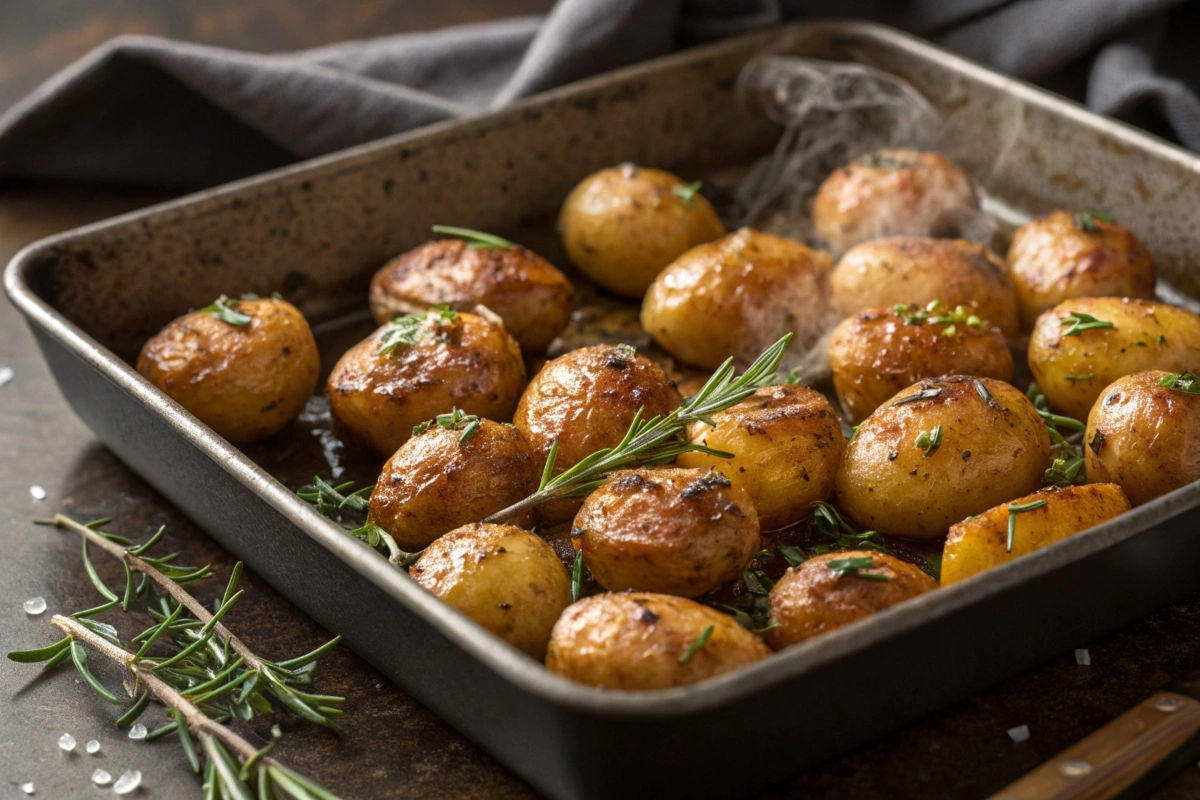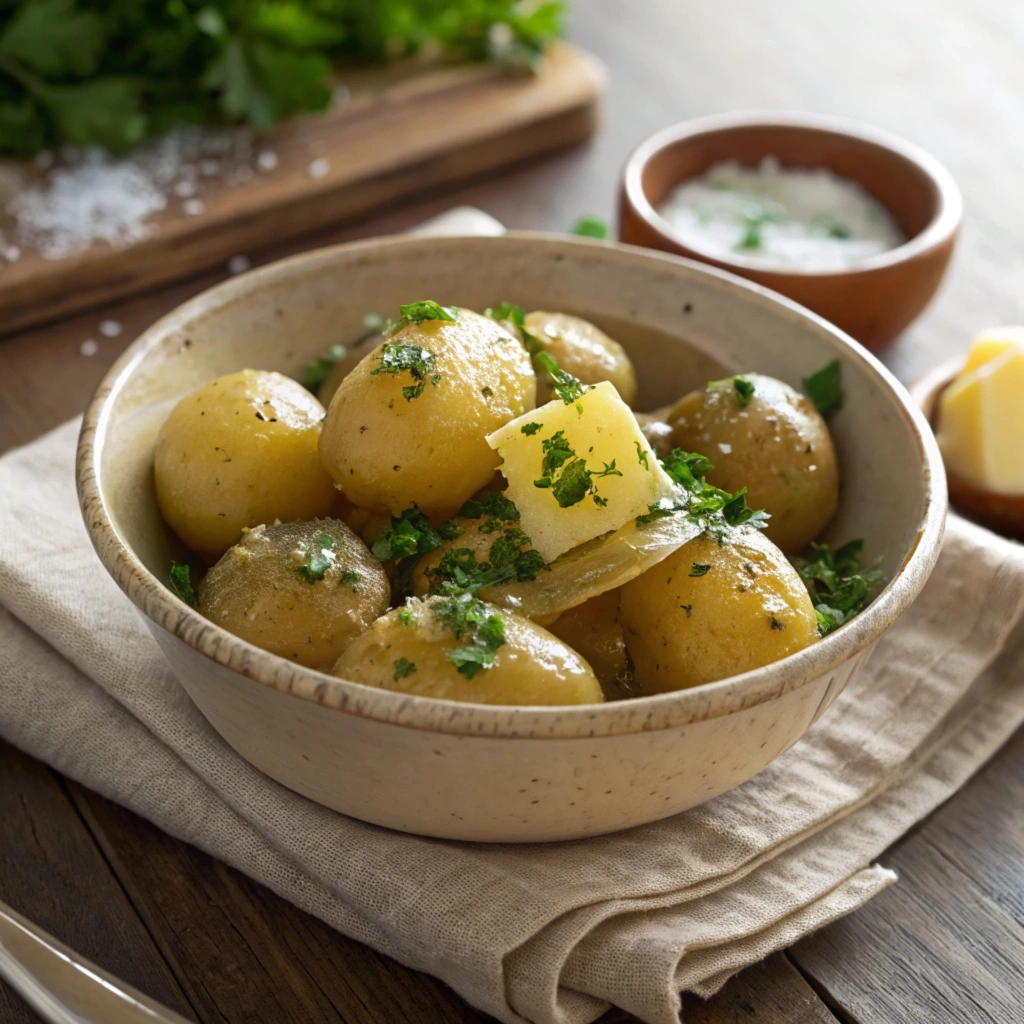Potatoes are one of the most versatile and beloved vegetables in the world. While most people are familiar with large, hearty types used for baking, frying, or mashing, smaller varieties are becoming increasingly popular. Known for their distinct size and unique flavor, these little potatoes bring an entirely different texture and appeal to the table.
Often referred to as gourmet or baby potatoes, they are highly favored in kitchens worldwide. Their compact size makes them perfect for roasting, boiling, or incorporating into elegant dishes without the need for peeling or chopping. Despite their smaller stature, they carry a robust taste and hold up well in a variety of cooking methods.
From farm-to-table restaurants to home kitchens, understanding the appeal and significance of these miniature potatoes opens up exciting culinary possibilities. Let’s explore why these tiny gems have become a favorite in kitchens everywhere.
What Are the Very Small Potatoes Called? An Overview
Smaller potatoes, commonly known as baby potatoes, new potatoes, or petite varieties, are harvested early before they reach full maturity. Rather than being a separate species, they are standard potatoes picked during the early stages of their growth cycle. This early harvesting gives them a tender texture, thin skins, and a sweet, nutty flavor that fully matured potatoes often lack.
The demand for these tiny spuds has grown significantly in recent years. They are ideal for quick, easy cooking and require minimal preparation. Whether roasted with herbs, sautéed in butter, or tossed into a salad, these petite varieties add a refined touch to dishes without compromising their natural flavor.
Beyond their convenience, these early-harvested potatoes are also nutrient-dense. Rich in vitamins, potassium, and fiber, they offer a variety of health benefits. Chefs and home cooks alike appreciate their versatility, making them a staple in both traditional and modern recipes.
Understanding Small-Sized Potatoes

Understanding Small Potatoes
Small potatoes, often referred to as baby potatoes or petite potatoes, are young potatoes harvested before they fully mature. Farmers pick these small varieties early in their growth cycle, giving them a distinct texture, flavor, and appearance. Generally, small potatoes range between 1 to 2 inches in diameter, making them easy to identify based on their compact, round, or oval shape.
Their thin, delicate skins require no peeling, and they have a tender, waxy interior that holds up well when cooked. This makes them ideal for boiling, roasting, or sautéing without falling apart. Small potatoes often come in red, yellow, purple, or even multicolored varieties, adding vibrant visual appeal to dishes. Their flavor tends to be slightly sweet and earthy, with a creamy texture that complements both hearty and light meals.
Why Are They Called Small Potatoes?
The term small potatoes originates from their literal size, as these potatoes are significantly smaller than their mature counterparts. However, people also use the phrase “small potatoes” colloquially to describe something of little importance or value. Historically, people considered smaller potatoes less desirable than larger, starchy varieties.
In different regions, they go by various names, such as “new potatoes” in the United States, “chat potatoes” in Australia, or simply “baby spuds” in casual conversation. Regardless of naming variations, these petite potatoes have gained immense popularity due to their culinary versatility and ability to enhance dishes with both flavor and presentation.
Exploring the Appeal of Small-Sized Potatoes
Baby Potatoes
Baby potatoes are a term commonly used to describe young, small potatoes harvested early before they reach full maturity. Despite their small size, baby potatoes are not a specific variety but simply standard potatoes picked early. Their skins are thin, delicate, and often do not require peeling, making them convenient for cooking. Baby potatoes have a waxy, firm texture that allows them to hold their shape well when boiled, roasted, or sautéed. They are typically round or oval and come in a variety of colors, such as yellow, red, or even purple. Because of their mild, slightly sweet flavor, baby potatoes are often used in salads, soups, and side dishes.
New Potatoes
New potatoes refer to freshly harvested potatoes that are dug out early in the season. Unlike mature potatoes that are left to fully develop their starch content, new potatoes have a higher moisture content and a creamier texture. Their skins are extremely thin and sometimes flaky, which makes them ideal for recipes that call for boiling or steaming. These potatoes tend to be tender and slightly sweet, often requiring minimal seasoning to enhance their flavor. New potatoes are often used as a fresh, light addition to meals during the early summer months, making them a seasonal favorite.
Fingerling Potatoes
Fingerling potatoes are small, elongated potatoes with a shape that resembles fingers, hence the name. These potatoes are naturally small and narrow, even when fully matured. Fingerling varieties, such as Russian Banana, French Fingerling, and Purple Peruvian, boast distinct colors and flavors. Their waxy texture and unique appearance make them perfect for roasting or pan-frying. They are prized in gourmet cooking for their ability to retain their shape and enhance the visual appeal of a dish. Fingerling potatoes have a rich, earthy taste that pairs well with herbs, garlic, and olive oil.
Petite Potatoes
Petite potatoes, also called mini potatoes, are smaller versions of full-sized potato varieties. Unlike baby potatoes, which are harvested early, petite potatoes are intentionally cultivated to remain small and compact. They are uniform in size and often sold in bags containing a mix of colors, such as red, gold, and purple. Their thin skins and creamy texture make them ideal for quick cooking methods like roasting, steaming, or microwaving. Petite potatoes are a favorite among chefs and home cooks for their versatility, convenience, and elegant presentation in dishes.
Nutritional Benefits of These Potatoes
Nutritional Benefits of Small Potatoes
Despite their petite size, small potatoes pack a powerful punch of essential vitamins, minerals, and dietary fiber. They are low in calories, making them a great addition to balanced diets. A typical serving of small potatoes (about 150 grams) contains roughly 120 calories, with little to no fat. They are rich in Vitamin C, which supports immunity, and potassium, a mineral crucial for maintaining healthy blood pressure and muscle function. Additionally, small potatoes provide Vitamin B6, which aids metabolism, and antioxidants that help fight free radicals in the body. Their thin skins are also a source of dietary fiber, promoting better digestion and overall gut health.
Culinary Versatility
One of the key reasons small potatoes are so popular is their unmatched culinary versatility. Their tender, waxy texture allows them to retain their shape during cooking, making them perfect for various methods, including roasting, boiling, steaming, sautéing, and grilling. Small potatoes require minimal preparation since their delicate skins do not need peeling, saving time in the kitchen. They work well in salads, soups, stews, or simply as a side dish seasoned with herbs and olive oil. From elegant gourmet meals to casual comfort foods, small potatoes add flavor, texture, and visual appeal to any dish.
Storage and Shelf Life
Proper storage can significantly extend the shelf life of small potatoes. They should be kept in a cool, dark, and well-ventilated place, such as a pantry or cellar, to prevent sprouting and spoilage. Avoid storing them in the refrigerator, as cold temperatures can alter their flavor and convert starches into sugar. If stored correctly, small potatoes can last for several weeks. For optimal freshness, check them periodically and remove any potatoes showing signs of sprouting or softening. By maintaining the right conditions, small potatoes remain fresh, firm, and ready to use in a variety of dishes.
Popular Varieties and Regional Differences
Small Potatoes in the United States
In the United States, farmers widely cultivate small potatoes, and people enjoy them for their versatility and rich flavors. Popular types include baby reds, Yukon Gold, and creamer potatoes. Baby reds have thin, smooth red skins and a firm, waxy texture, making them perfect for boiling, roasting, or adding to salads. They bring a vibrant pop of color and a subtly sweet flavor to dishes.
Yukon Gold small potatoes feature buttery-yellow flesh and thin golden skin, and cooks prize them for their creamy texture when cooked. These potatoes work exceptionally well in mashed potatoes, soups, or as a roasted side dish. Another favorite, creamer potatoes, are small, round potatoes with uniform size and smooth skin. Grocery stores often sell them in bags, and they require little preparation, making them a go-to choice in many American kitchens. They are perfect for steaming, roasting, or pan-frying.
Unique European and Andean Potato Varieties
Europe boasts an impressive variety of small potatoes that reflect the region’s rich agricultural heritage. In the United Kingdom, Maris Peer and Charlotte potatoes are among the most loved small varieties. Maris Peer potatoes have a waxy texture that holds up well when boiled, while Charlotte potatoes, known for their elongated shape, are perfect for salads and steaming.
In France, the Ratte potato is highly regarded. With its creamy, nutty flavor and firm texture, the Ratte is often featured in gourmet dishes, particularly when roasted or sautéed. Similarly, other European regions, like Germany and Spain, favor small potatoes such as the Sieglinde and Patata Bonita, respectively, for their robust flavor and cooking versatility. These varieties are not only delicious but also symbolize the importance of potatoes in European culinary traditions.
South American Origins
The story of small potatoes begins in South America, particularly in the Andean region, where potatoes were first domesticated over 7,000 years ago. Indigenous farmers in countries like Peru, Bolivia, and Ecuador cultivated hundreds of potato varieties, many of which remain staples today. People admire small Andean potatoes for their vibrant colors, including reds, purples, and yellows, as well as their diverse shapes and flavors.
People treasure varieties like Papa Criolla and Papa Amarilla for their unique, rich taste and creamy texture. These potatoes play a crucial role in traditional South American dishes, such as Papas a la Huancaína and hearty stews. The Andean farmers’ careful preservation of potato varieties has had a lasting influence on global agriculture, ensuring that small potatoes continue to be an essential crop worldwide. Their ability to grow in challenging environments highlights their resilience and cultural significance.
Cooking Methods and Recipes

Roasting for a Crispy Finish
Roasting is one of the most popular ways to cook small potatoes because it enhances their natural flavor while creating a crispy, golden exterior. Follow this step-by-step guide for perfect roasted potatoes:
- Preheat the oven to 400°F (200°C).
- Wash the small potatoes thoroughly, leaving their skins on for added texture and nutrients. Pat them dry with a towel.
- Cut any larger small potatoes in half to ensure even cooking while leaving smaller ones whole.
- Toss the potatoes in a large bowl with olive oil, salt, pepper, minced garlic, and fresh herbs like rosemary or thyme.
- Spread the potatoes evenly on a baking sheet and make sure they don’t overcrowd.
- Roast for 25-30 minutes, shaking the pan halfway through to promote even browning.
- Once golden and crispy, remove them from the oven and garnish with parsley or a sprinkle of parmesan cheese.
These roasted small potatoes pair perfectly with meats, vegetables, or as a stand-alone snack.
Boiling and Steaming for Tender Results
Boiling and steaming are excellent methods for cooking small potatoes while preserving their creamy texture and delicate flavor.
- Boiling:
- Wash the potatoes and place them in a pot of salted water.
- Bring the water to a boil over medium-high heat and cook for 10-15 minutes, depending on the size.
- Check doneness by inserting a fork—potatoes should be tender but not mushy. Drain the water and serve warm with butter and herbs.
- Steaming:
- Place small potatoes in a steamer basket over boiling water.
- Cover and steam for 10-12 minutes until fork-tender.
- Steamed potatoes retain their shape and work beautifully in salads or as a side dish with light seasoning.
Both boiling and steaming allow the potatoes’ natural sweetness and texture to shine, making them versatile for many recipes.
Creative Recipe Ideas to Try
Here are a few simple and delicious recipes that highlight the appeal of small potatoes:
- Roasted Garlic Potatoes: Toss small potatoes with olive oil, minced garlic, salt, and pepper. Roast in the oven at 400°F (200°C) for 30 minutes until golden and crispy. Garnish with fresh parsley for an aromatic finish.
- Classic Potato Salad: Boil small potatoes until fork-tender, then cut them in halves or quarters. Toss with mayonnaise, mustard, chopped celery, red onion, and a sprinkle of dill. Chill for at least an hour before serving for maximum flavor.
- Mashed Baby Potatoes: Boil small potatoes with their skins on. Once tender, mash them gently with butter, a splash of cream, salt, and pepper. For added flavor, stir in roasted garlic or grated cheese. The skins provide a rustic texture and added nutrients.
Delicious Dishes to Pair
1. Understanding the Meaning of “Small Potatoes”
If you’re curious about the origins of the phrase “small potatoes” and what it symbolizes, you can learn more in this detailed explanation: What Does the Phrase Small Potatoes Mean.
2. Discover the World’s Best Potato
Looking to explore the top potato varieties across the globe? Check out this guide to uncover What Is the World’s Best Potato.
3. Gordon Ramsay’s Favorite Potatoes
Want to know which potatoes celebrity chefs prefer for their recipes? Find out What Potatoes Gordon Ramsay Uses for his perfect dishes.
Frequently Asked Questions (FAQs)
What are the tiny potatoes called?
People often call tiny potatoes by names such as baby potatoes, new potatoes, creamer potatoes, or petite potatoes. These terms emphasize their small size and tender texture. Farmers either harvest them early, before full maturity, or cultivate them to remain naturally small. In contrast, fingerling potatoes stand out with their unique elongated shape, setting them apart from other small varieties.
What are Yukon potatoes good for?
Yukon Gold potatoes are versatile and prized for their creamy, buttery texture and golden color. They are excellent for boiling, mashing, roasting, and even frying. Their medium starch content allows them to hold their shape during cooking, making them perfect for dishes like mashed potatoes, potato salads, soups, and oven-roasted sides.
Do the small potatoes have names?
Yes, these potatoes are known by different names depending on their size, shape, and region. Common terms include baby potatoes, new potatoes, petite varieties, or creamers. In Europe, popular options like Ratte, Maris Peer, and Charlotte potatoes are celebrated for their unique textures and flavors. In the United States, varieties such as Yukon Gold, red potatoes, and fingerlings are widely appreciated for their versatility and rich taste.
Are fingerling potatoes just small potatoes?
Fingerling potatoes are not just small potatoes; they are a unique variety with a narrow, elongated shape that resembles fingers. Unlike baby or new potatoes, which are young and immature, fingerlings are fully mature when harvested. They have a waxy texture, making them ideal for roasting, sautéing, or adding to gourmet dishes. Their unique appearance and rich flavor set them apart from other small potato types.
Conclusion
Small potatoes may be petite in size, but they hold a significant place in kitchens around the world. Their versatility, tender texture, and rich flavors make them a favorite for a variety of dishes, from simple boiled preparations to gourmet roasted creations. Whether called baby potatoes, new potatoes, or petite potatoes, these little gems provide convenience and culinary charm that larger potatoes often can’t match.
Nutrient-dense and easy to prepare, small potatoes provide a healthy addition to meals while saving time in the kitchen. Their ability to adapt to different cooking methods, like roasting, steaming, or mashing, ensures they remain a staple for both everyday meals and special occasions.
Understanding the different types and names of these very small potatoes called enhances our appreciation for their role in modern cuisine. Perfect for any recipe, small potatoes prove that great things often come in small packages.

